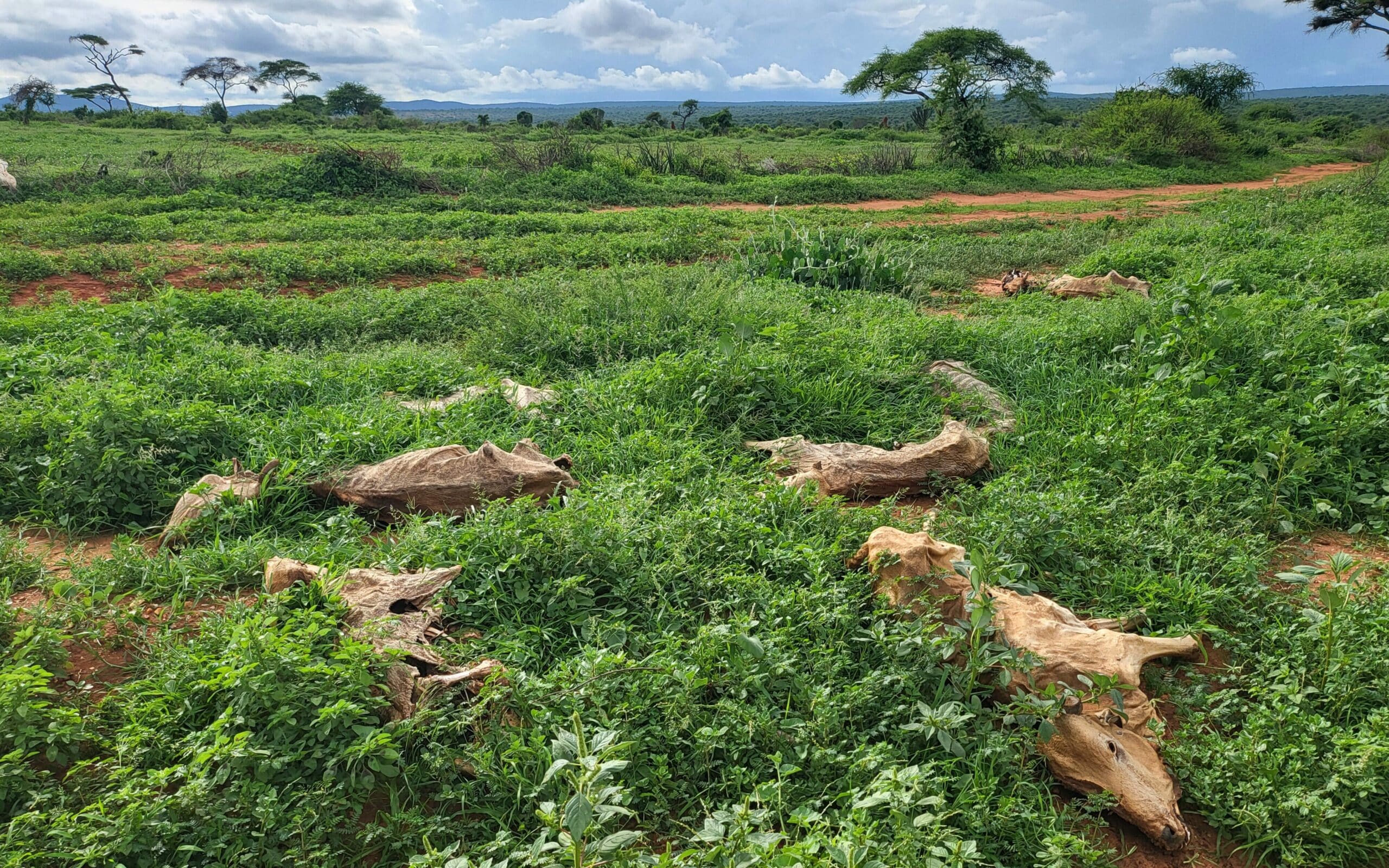Floods and droughts are two sides of the same coin
The United Nations describes droughts as one of the greatest threats to sustainable development. Forecasts predict that by 2050, droughts may affect more than 75 percent of the world’s population. The magnitude of this problem requires the international community’s attention every day, but today, on the world day to combat desertification and drought, we want to specifically highlight the importance of climate resilience and global action to combat drought and the correlation between drought and floods.
Recent research by Kimutai et al. (2023) shows that the chances of drought in the horn of Africa is 100 times higher due to climate change. This is not only related to the lack of rainfall, but especially to how fast the water dampens again due to high temperatures. Though the amount of rainfall is important, the effects of global warming and high temperatures are thus even more impactful.

Though we may all know the pictures of the dusty, dry landscapes in the horn of Africa, there is also still a lot of flooding in the region. This may lead to the misconception that these floods contradict the increase and severity of droughts that are predicated; however, this is definitely not the case. When we see floods in otherwise dry areas, it is important to be aware and spread awareness on that this excessive amount of rain does not solve the shortage of water or even out drought. When a lot of rain falls in a very short period of time after longer periods of drought, the soil is not able to fully “take it in” and this leads to a shallow absorbance of the rain. This also increases the chance of floods, since the water flows off because it is not absorbed by the soil. One of the places where this became evident, is in Borena, Ethiopia.
Droughts and floods in Ethiopia
Fikru Tarekegn, Country Director of Dorcas Ethiopia, describes: ‘Borena is located in the southern part of Ethiopia, which is known for pastoralism and drought. The frequency of drought has increased over the recent years due to climate change. There was no rain for the last two-and-a-half years, and this caused a huge problem in the area. As a result, more than 3.3 million livestock died. As the economy is dependent on livestock, the life and livelihood of the community were disrupted which resulted malnutrition, psychosocial problems, to deal with unpreferred coping mechanisms and migration. Unfortunately, the recent rain in the area was also a disaster as it came in big volume and became a flood. The flood has also killed the animals that survived the drought, and it brought water borne diseases.’
When the high intensity of rain came after two and-a-half years of drought, the landscape may have looked very healthy and green for a period of time, but this may give wrong impression. The livestock continued to die after the rainfall due to the flooding. Additionally, it was also thought that the livestock was also possibly dying because they were no longer used to the large amounts of water and grass and their intestines could not cope with this.

Droughts and floods in Kenya
In Kenya, desertification continues to pose a challenge over the years to 84 percent of the Kenyan landscapes that are classified as arid or semi-arid. Edwin Onyancha, Country Director of Dorcas Kenya describes: ‘These lands support 34 percent of the population and 60 percent of livestock. These drylands have seen unprecedented land degradation often exacerbated by effects of climate change, deforestation, loss of biodiversity, overgrazing, over-use of underground water, prolonged droughts and flooding, as well as conflicts over competition for natural resources. Increasingly, livelihoods, especially those related to livestock production and agriculture, continue to be affected as these landscapes become more vulnerable to vagaries of the weather. There is an urgent need to address desertification through broad supportive policies that define management of fragile landscapes to protect biodiversity and natural resources, as well as addressing effects of climate change through both adaptation and mitigation. Regional and cross-border conservation efforts that promote restoration and regeneration of natural resources (forests, woodlands, watershed, nature-based solutions etc.) needs to be supported. These efforts should go alongside strengthening capacities of residents on land use systems, conservation, particularly using indigenous knowledge and modern technologies, as well as implementing strategies to effectively address cross-border and inter-ethnic conflicts.’

Climate resilience
For Dorcas, climate resilience is central to our work and in all of our projects this is taken into account. Climate resilience is about adjusting to climate change, countering environmental degradation and minimising risk from disasters. We work with communities to prepare for and negate the effects of climate changes, thereby reducing the vulnerability of communities and their ecosystems. The cases of Ethiopia and Kenya show how important this is as climate change heavily affects rural communities. By adapting to cope with the effects of climate change, communities, enterprises and institutions can build up their climate-change resilience.
Kimutai, J; Barnes, C; Zachariah, M; Philip, S; Kew, S; Pinto, I; Wolski, P; Koren, G; Vecchi, G; Yang, W; Li, S; Vahlberg, M; Singh, R; Heinrich, D; Pereira, CM; Arrighi, J; Thalheimer, L; Kane, C; Otto, FEL (2023). Human-induced climate change increased drought severity in Horn of Africa. DOI: https://doi.org/10.25561/103482
17 June 2023
Are you inspired?
Read the next story or contact us to get to know more about making an impact together.